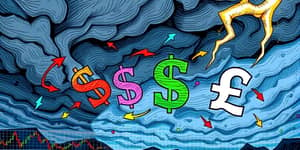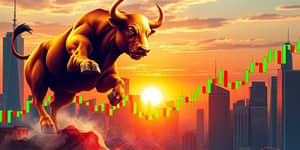
In financial markets, periods of rapid price appreciation often give way to dramatic collapses. These cycles of boom and bust are not driven solely by numbers and data—underlying every surge and crash is a powerful interplay of human emotions and collective behavior.
By examining historical bubbles and the psychological forces at work, investors can better recognize warning signs and adopt strategies to protect their portfolios.
A market bubble occurs when asset prices significantly exceed their intrinsic value. Participants weave elaborate justifications—“it’s different this time”—even as fundamentals weaken. Economist Charles Kindleberger outlined five stages of a bubble:
At the heart of every speculative frenzy are cognitive biases and emotional reactions. Understanding these drivers can help investors pause before following the herd.
Media coverage magnifies every rally, creating a feedback loop of hype and speculation. When leverage and loose lending standards enter the picture, the stage is set for a spectacular collapse.
From Tulip Mania to the Dot-Com Bubble, history has recorded vivid examples of human exuberance. Studying these episodes reveals recurring patterns.
Each of these bubbles followed Kindleberger’s five-stage progression. When optimism morphed into unfounded euphoria, leverage and risk soared, creating a fragile structure that collapsed under the slightest shock.
Several systemic factors intensify bubble dynamics:
When negative news or policy shifts arrive, overextended positions trigger forced liquidations. Panic ensues, driving prices down in a steep, self-reinforcing spiral.
The Efficient Market Hypothesis posits that prices reflect all available information. Reality paints a different picture: investors routinely act irrationally, as documented by behavioral finance researchers.
Hindsight Bias often leads survivors of a crash to believe they foresaw the collapse, while others fall into denial, convinced that markets will “recover quickly.” Such distortions can sow the seeds for the next bubble.
In recent years, the rise of social media and algorithmic trading has accelerated herd behavior. Memes and viral posts can spark buying frenzies overnight, as seen in cryptocurrency and meme-stock rallies.
While bubbles cannot be timed perfectly, investors can adopt measures to safeguard capital and mitigate emotional decision-making.
Regulatory oversight and central bank interventions often stabilize markets after a crash, but recovery can be slow and uneven. Investors who prepare for extended drawdowns are better equipped to weather turbulence.
Bubbles are as much a reflection of human psychology as they are of economic fundamentals. Recognizing the patterns of overconfidence, herd behavior, and irrational exuberance empowers investors to navigate volatile markets with greater resilience.
By studying past episodes of market hysteria and integrating behavioral finance insights into decision-making, individuals can transform fear into awareness and uncertainty into opportunity.
Ultimately, understanding the psychology of bubbles equips us not only to protect our portfolios but also to gain a deeper appreciation for the powerful forces that drive collective human behavior in every aspect of life.
References













